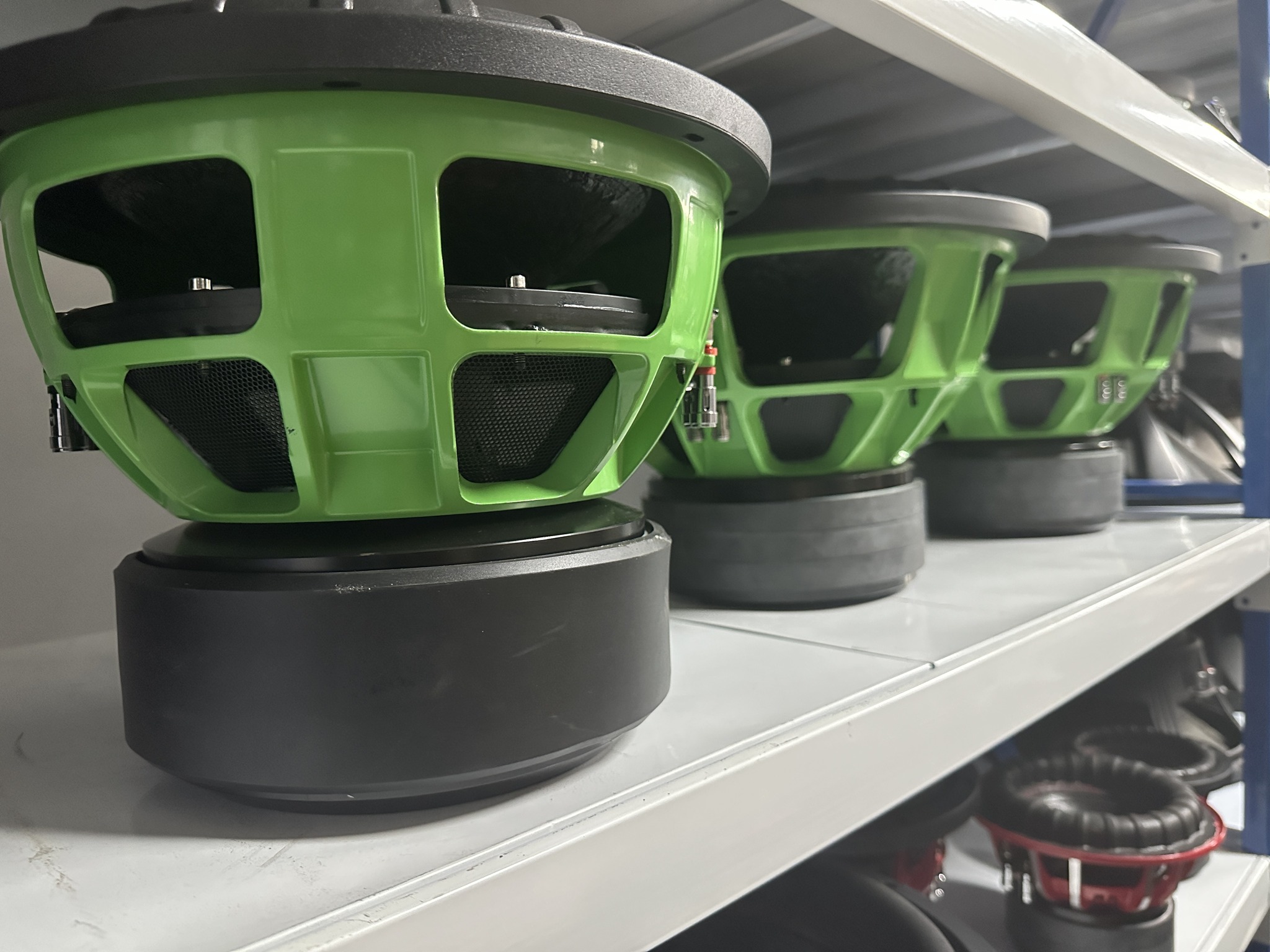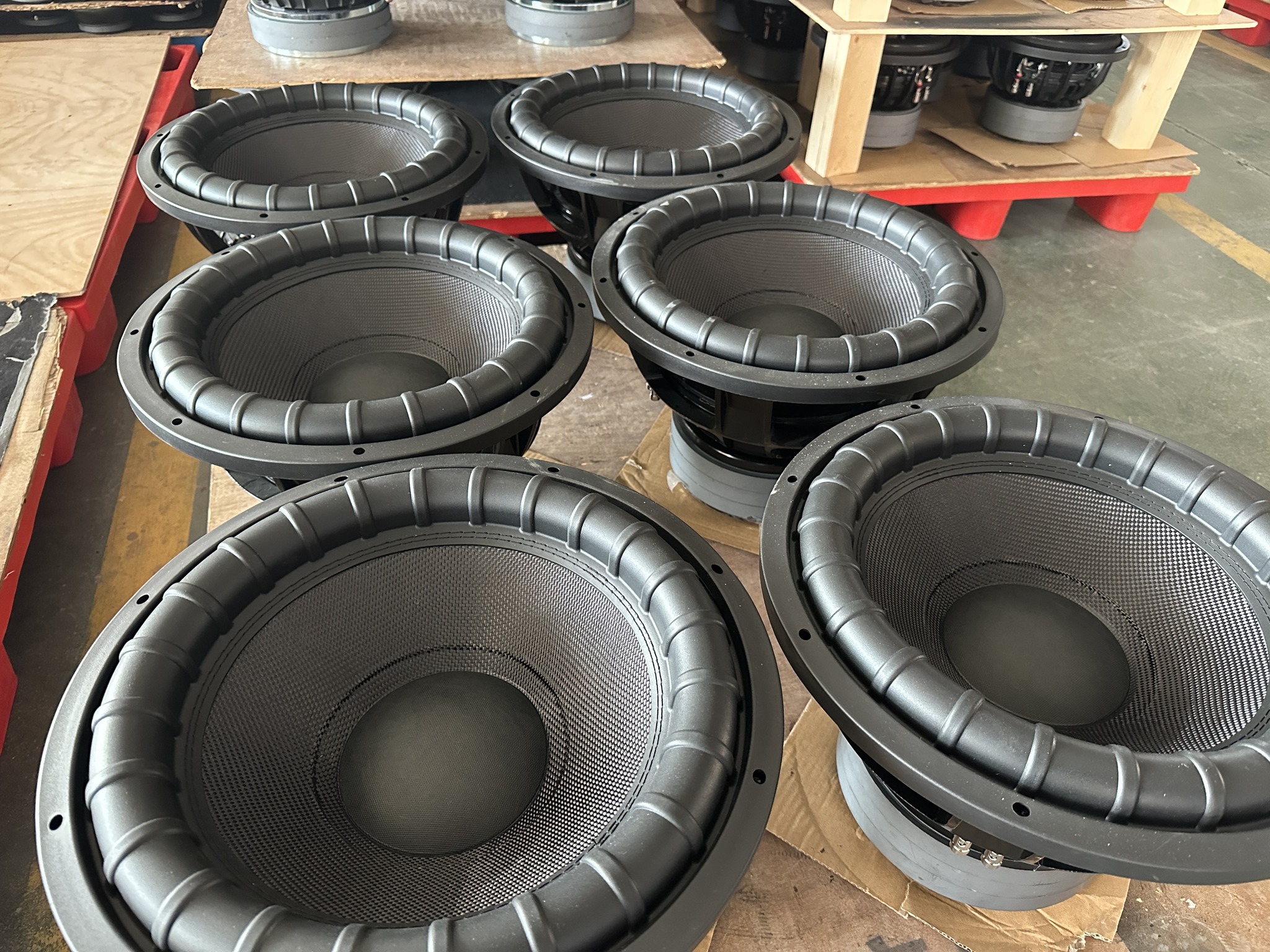
The voice coil of a speaker is the source of its driving force. Its material, winding method, etc. have a great influence on the characteristics of the speaker. The following is a brief discussion of single voice coil and dual voice coil speakers.
The difference between single voice coil and dual voice coil speakers
The design of the dual voice coil speaker is mainly to use the limited space to bring the bass effect to the best state. The bass of the same speaker with dual voice coil is stronger than that of the single voice coil, and theoretically it can achieve the effect of two single voice coils.
The dual voice coil speaker is somewhat different from the speakers we usually see. From the appearance, the general speakers are speakers with only one coil, while the dual voice coil speaker has two coils as the name implies. It wraps two sections of metal wire together on a common voice coil frame, but the two sections of metal wire are independent of each other. They are equal in length, equal in number of turns, and have exactly the same conductive properties.
The advantage of the dual voice coil speaker is that there are more wiring methods. A single dual voice coil speaker can have three connection options: series, parallel and independent connection. For example, a dual voice coil speaker with 4 ohms per voice coil becomes an 8 ohm speaker after two voice coils are connected in series, and becomes a 2 ohm speaker after two voice coils are connected in parallel. If the car amplifier is designed to drive high-impedance speakers, the two voice coils can be connected in series; if the car amplifier is designed to drive low-impedance speakers, it is better to connect the voice coils in parallel. In a system with multiple subwoofers, the advantages of dual voice coil speakers are more obvious.
Single voice coil speakers are more common, so I won’t go into details about their characteristics here. Let’s mainly talk about the characteristics and advantages of dual voice coil speakers.

Characteristics of Dual Voice Coil Speakers
1. Collaborative voice:
The dual voice coil speaker has two independent voice coil windings, which jointly push the diaphragm to sound under the action of the magnetic circuit current. This means that two amplifiers can be connected at the same time to sound together. Of course, these two amplifiers are particular, requiring the same power and phase, otherwise the signals will cancel each other out. For example: the car center speaker uses this principle of common sounding, inputs the left and right channel signals into the dual voice coil speaker during the playback stage to sound together.
Most of the music stereo signals are 80% in phase, and the anti-phase cancels each other out. The interesting result is that the center speaker plays the common part of the left and right, compensating for the lack of mid- and high-frequency signals in the car. Another application is low-voltage amplifiers. Due to the size and weight restrictions, the output power of low-voltage equipment amplifiers is often small. One amplifier drives the speaker volume insufficiently. The same signal is output to two identical amplifiers for amplification, and then connected to the two windings of the dual voice coil speaker, which has the effect of doubling the power and volume.
2. Impedance transformation:
Power amplifiers all have the problem of optimal load impedance. The impedance of a single speaker is fixed, while a dual voice coil speaker can change into four impedances. For example, a dual voice coil speaker with an impedance of 4Ω can be used as a 2Ω speaker when the two voice coils are connected in parallel, and can be used as an 8Ω speaker when the voice coils are connected in series. This makes the matching of speakers and power amplifiers more flexible.
Advantages of Dual Voice Coil Speakers
1. Independent, no interference
The dual voice coil speaker contains two independent voice coils, one speaker contains left and right channels, and can be regarded as two mid-range speakers, which are directly integrated into the left and right channels in front to reproduce the sound field. The single voice coil speaker is designed as an independent power amplifier. If it is directly integrated into the left and right channels of ordinary motorcycles, it is easy to cause crosstalk between the left and right channels, and even cause interference noise.
2. Light burden, easy to push
The single voice coil center speaker uses the left and right channel bridge method. The low impedance speaker increases the burden on the power amplifier. Improper use may cause heat damage. In the dual voice coil design, we output the same signal to two identical power amplifiers for amplification, and then connect the two windings of the dual voice coil speaker to achieve the effect of doubling the power and volume. In addition, aluminum fins are used to dissipate heat and stabilize the rubidium magnet, making the volume brighter.
